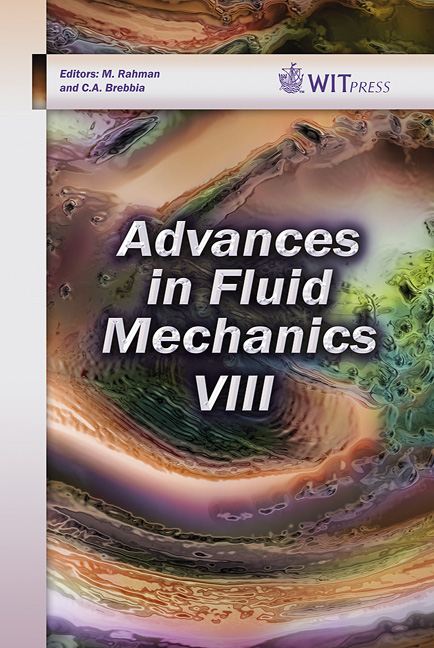On Properties Of Turbulence Models
Price
Free (open access)
Transaction
Volume
69
Pages
12
Page Range
15 - 26
Published
2010
Size
808 kb
Paper DOI
10.2495/AFM100021
Copyright
WIT Press
Author(s)
T. H. Moulden
Abstract
Many applications of fluid mechanics are to turbulent flows. The practical computation of such flows call upon turbulence models to provide the information needed to close the mean motion equations. The present comments concern those properties of turbulence models that may be obtained by direct study of the field equations defining these models. The second moment model and the k ~ ε model are the focus of attention and norm inequalities are written for these models. The stability properties of the associated dynamical system are determined. Some difficulties associated with obtaining norm estimates are also discussed. Keywords: turbulence models, energy estimates. 1 Background It is generally accepted that the Navier–Stokes equations describe the motion of fluids under normal conditions of pressure and temperature. It is also accepted that these same equations describe turbulent fluid motion (the \“sinuous motion” described by Stokes and studied by Reynolds). A caution is necessary at this point since the consistency of the Navier–Stokes equations has not been documented. In particular, there is no complete existence, uniqueness and regularity results available for these equations when provided with general boundary conditions. Restrict attention to constant density fluid motion. Due to the lack of a complete theory for the constant density Navier–Stokes equations: ∂vi ∂xi = 0 (1) ∂vi ∂t + ∂(vivj) ∂xj + ∂p ∂xi = ν∇2(vi) + fi (2) noted above, it cannot be expected that a complete theory exists for the mean motion equations used to treat turbulent flow. Here v(x, t) is the instantaneous
Keywords
turbulence models, energy estimates





